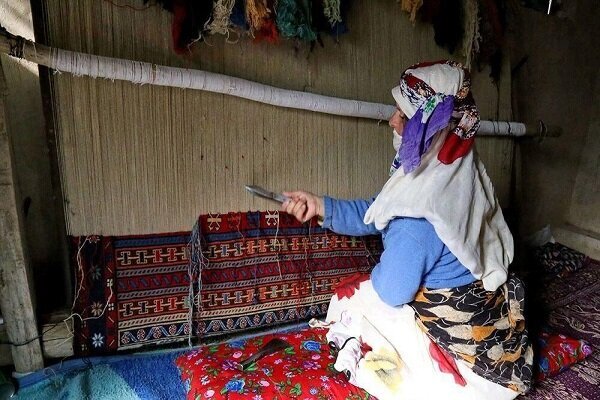Iranian handicrafts: Varni-bafi of Ardabil

TEHRAN –Varni-bafi is an art of weaving a traditional and popular flooring cover in Ardabil province. It is currently being practiced in an area called Dasht-e Moghan, which lies in northwestern Iran.
Varni is a delicate kilim also known as a Sumak. Many experts consider the Varni that is double-sided, as something between carpets and kilims. It requires a skilled weaver with years of experience to produce a Varni.
Varni is woven using "Pudpichi". This is a method of making kilims, where an additional thin thread is woven into the weft and warp yarns. Weft yarns are then inserted and then thin weft is added before they are combed together. The extra weft strengthens the connection between the yarns and creates a stronger weave.
Kilims of this quality are considered to be the most durable in the world. Another weave that is very similar to Varni is Shirkipich, which is a product of Kerman. The only difference is in the motifs and patterns. Noah’s ark is said to have landed in Azarbaijan, explaining why animal motifs are so popular.
Varni is a nomadic hand-woven art and stems from an ancient tribe known as the Shahsavan in the past, according to Visit Iran.
The famed Safavid king, Shah Abbas I (1571-1629) named the Shahsavan, which was formed from merging fifty tribes into one, after ordering them to settle in the Azarbaijan region as a defense against the Ottoman Empire. Shahsavan is now known as Ilsavan.
Varani is made more frequently in the winter season since the nomads have settled in one place and have the time. Wool and silk are used for the yarn. Handspun wool or silk yarns serve as wefts, while cotton, wool, or silk yarns are used as wraps.
The Ardabil nomads use Varni to make saddlebags and horse covers that, in terms of style, motifs (birds and animals), and color palettes, are among the best in Iran. A large saddlebag, which is used to carry the utensils of nomads, is adorned with motifs that are inspired by prehistoric potteries from this area.
Sprawling on a high, windswept plateau, Ardabil is well-known for having lush natural beauties, hospitable people, and its silk and carpet trade tradition. It is also home to the UNESCO-registered Sheikh Safi al-Din Khanegah and Shrine Ensemble.
The province is very cold in winter and mild in summer, attracting thousands every year. The capital city of Ardabil is usually recorded as one of the coldest cities in the country in winter.
ABU/MG

Leave a Comment